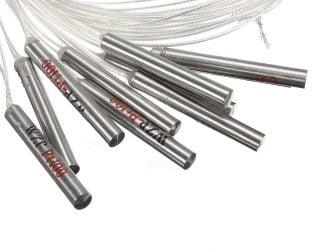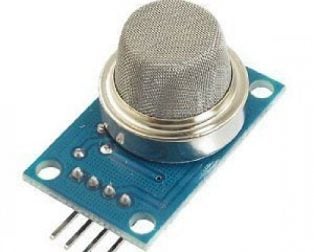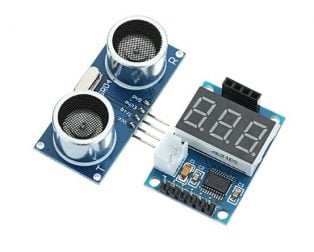Difference between Sensor and Transducer
The blog covers the differences between a sensor and a transducer.

One of the significant difference between the sensor and the transducer is that the sensor senses the physical changes occur in the surrounding whereas the transducer converts the physical quantity or nonelectrical into another signal or electrical signal. The transducer and sensor both are the physical devices used in electrical and electronic instruments for measuring the physical quantities.
What is Sensor?
A sensor is a device that detects and responds to some type of input from the physical environment. The specific input could be light, heat, motion, moisture, pressure, or any one of a great number of other environmental phenomena.
The output is generally a signal that is converted to human-readable display at the sensor location or transmitted electronically over a network for reading or further processing.
Here are a few examples of the many different types of sensors:
In a mercury-based glass thermometer, the input is temperature. The liquid contained expands and contracts in response, causing the level to be higher or lower on the marked gauge, which is human-readable.
An oxygen sensor in a car's emission control system detects the gasoline / oxygen ratio, usually through a chemical reaction that generates a voltage. A computer in the engine reads the voltage and, if the mixture is not optimal, readjusts the balance.
Motion sensors in various systems including home security lights, automatic doors and bathroom fixtures typically send out some type of energy, such as microwaves, ultrasonic waves or light beams and detect when the flow of energy is interrupted by something entering its path.
A photosensor detects the presence of visible light, infrared transmission (IR), and/or ultraviolet (UV) energy. The accelerometer sensor use in the mobile for detecting the screen rotations.
What is Transducer?
The transducer is a device that changes the physical attributes of the non-electrical signal into an electrical signal which is easily measurable. The process of energy conversion in the transducer is the transduction. The transduction is completed into two steps. First by sensing the signal and then strengthening it for further processing.
The transducer has three major components; they are the input device, signal conditioning or processing device and an output device.
The input devices receive the measured quantity and transfer the proportional analogue signal to the conditioning device. The conditioning device modified, filtered, or attenuates the signal which is easily acceptable by the output devices.
A transducer is an electrical device that uses to convert one form of energy into another form. In general, these devices deal with different types of energies such as mechanical, electrical energy, light energy, chemical energy, thermal energy, acoustic energy, electromagnetic energy, and so on.
For instance, consider a mic we use in daily life in telephones, mobile phones, that converts the sound into electrical signals and then amplifies it into the preferred range. Then, alters the electrical signals into audio signals at the o/p of the loudspeaker. Nowadays, fluorescent bulbs are used for lighting, changes the electrical energy into light energy.
The best examples of the transducer are mic, fluorescent bulb and speaker can be considered as a transducer. Likewise, there are different kinds of transducers used in electrical and electronic projects.
Difference between Sensor and Transducer
Some other differences between the sensor and transducer are explained below in the comparison chart.
Parameters |
Sensor |
Transducer |
|
Defination |
A sensor is designed to sense any physical change occurring in the surrounding. |
A transducer actuates to transform energy from a given form to another. |
|
Comprises of |
The sensor has no other component except itself. |
The transducer contains Signal conditioning and sensor. |
|
Functionality |
Detects changes and generates corresponding electrical signals. |
Responsible for converting energy into a different form. |
|
Complexity of performance |
compared to transducer, a sensor is less complicated in its performance. |
A transducer serves to be a more complicated device as it is designed to transform the physical quantity into another output signal (voltage, current) |
|
Feedback |
A sensor measures a physical quantity only and cannot give input to the desired system on its own. |
It is generally used for providing feedback to the desired system through the output device after due processing takes place in the signal conditioning unit. |
|
Dependency |
A sensor may not be a transducer. |
A transducer will always contain a sensor. |
|
Applications |
Proximity sensor, Magnetic sensor, Accelerometer sensor, Light sensor etc. |
Thermistor, Potentiometer, Thermocouple etc. |
Conclusion
Sensors and transducers are used for measuring physical quantities such as temperature, light, displacement, heat, etc. These physical devices are quite diverse in nature and functionality and should not be confused in any way. We have tried to touch upon the various points of difference between sensors and transducers in this article.
We at Robu.in hope that you found it interesting and that you will come back for more of our educational blogs.












